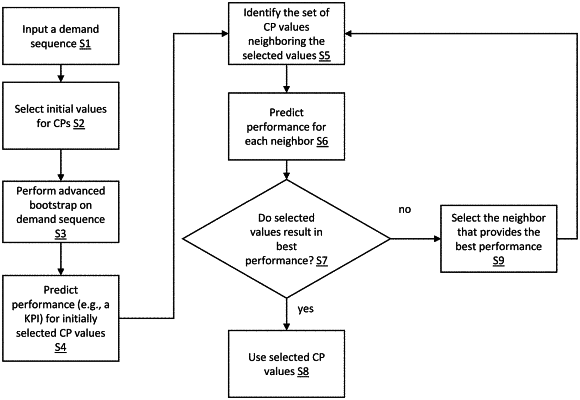| CPC G06F 9/455 (2013.01) [G05B 13/0265 (2013.01); G05B 13/042 (2013.01); G05B 13/048 (2013.01)] | 17 Claims |

|
1. A system, comprising:
a memory; and
a processor coupled to the memory and configured to process demand data for a set of resources according to a method that includes:
collecting demand sequences, wherein each demand sequence is associated with a resource managed by a technology platform;
processing a demand sequence for a selected resource to calculate an optimized control parameter (CP) value set adapted to manage an automated process within the technology platform, wherein calculating the optimized CP value set for the selected resource includes:
processing the demand sequence to generate a collection of bootstrapped demand sequences, wherein the bootstrapped demand sequences are generated with a bootstrap process that includes:
detecting a trend in the demand sequence, wherein detecting includes differentiating between a mild trend or a strong trend;
in response to a detected mild trend, utilizing a shifted resampling probability distribution to generate a collection of bootstrapped demand sequences; and
in response to a detected strong trend, adding values to a beginning or end of a demand distribution and changing resampling probabilities to generate a collection of bootstrapped demand sequences;
processing the bootstrapped demand sequences with a performance prediction process that models the automated process to predict a performance metric for an initially selected CP value set;
identifying a neighborhood of CP value sets that includes neighbors and the initially selected CP value set;
predicting the performance metric for each neighbor with the performance prediction process; and
identifying from the neighborhood of CP value sets the optimized CP value set that provides a best performance metric.
|